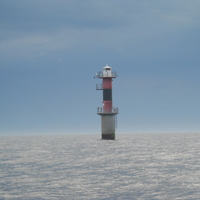- 17th-Century Studies, 17th Century Dutch Republic, Archaeology of Buildings, Nautical Archaeology, Shipbuilding, Maritime Archaeology, and 18 moreUnderwater Archaeology, Ancient Shipwrecks, Shipwrecks, Naval Architecture (History), Naval History, Ancient and Medieval Shipbuilding, Maritime History, Naval Architecture, Maritime and Underwater Archaeology, Seafarers, Archaeology of Mediterranean Trade, Ottoman Navy, Charles Gore (1729-1807), Naval Warfare, Naval Tactics, Dutch West India Company, Russo-Turkish Naval Rivalry, and Navy of the Ottoman Empireedit
A painting from the depot of the Gemäldegalerie Berlin was identified and presented to the public after a difficult restoration. The painting shows two rare depictions of armed merchant ships from the time of the Great Elector (1620-1688).
Research Interests:
As of today, the Great Elector’s fleet has been referred to in historiography as “the navy”. However, this was not a scientific objective, but rather a political purpose. The protagonists of the Brandenburg fleet, especially Benjamin... more
As of today, the Great Elector’s fleet has been referred to in historiography as “the navy”. However, this was not a scientific objective, but rather a political purpose. The protagonists of the Brandenburg fleet, especially Benjamin Raule (1634-1707), considered warships important, not as an end in themselves, but for the protection of Brandenburg’s merchant ships and for the business of privateering. For this re-examination of the Brandenburg fleet, the identification of a previously unknown painting and the analysis of the content of a frequently cited painting as a source are of great importance. Furthermore, the review of the written sources also supports the new view. However, the unchanged use of terms of modern institutions for historical institutions and concepts must also be questioned.
Research Interests:
As of today, the Great Elector’s fleet has been referred to in historiography as “the navy”. However, this was not a scientific objective, but rather a political purpose. The protagonists of the Brandenburg fleet, especially Benjamin... more
As of today, the Great Elector’s fleet has been referred to in historiography as “the navy”. However, this was not a scientific objective, but rather a political purpose. The protagonists of the Brandenburg fleet, especially Benjamin Raule (1634-1707), considered warships important, not as an end in themselves, but for the protection of Brandenburg’s merchant ships and for the business of privateering. For this re-examination of the Brandenburg fleet, the identification of a previously unknown painting and the analysis of the content of a frequently cited painting as a source are of great importance. Furthermore, the review of the written sources also supports the new view. However, the unchanged use of terms of modern institutions for historical institutions and concepts must also be questioned.
Research Interests:
Historical ship models derive their significance from their authenticity. This also includes the biography of the object. However, the past is known about very few models. Of even fewer models can be traced back to their origins. In the... more
Historical ship models derive their significance from their authenticity. This also includes the biography of the object. However, the past is known about very few models. Of even fewer models can be traced back to their origins. In the Facultat de Nàutica de Barcelona, exactly such a historical object can be viewed. What is surprising is the relatively little known about this 3.66 m long ship model from the 18th century.
Research Interests:
Im 20. Jahrhundert wurden historische Schiffsmodelle nicht als eigenständige Quelle anerkannt. In Betrachtungen wurden auch zeitgenössische Erwartungen, die mit den Modellen nichts gemeinsam haben, transportiert.
Research Interests:
Bei Sotheby's wurde 2006 eine Zeichnung von Willem van de Velde versteigert. Allerdings war die Identifizierung des Schiffes falsch und die Richtigstellung ermöglichte auch einen anderen Blick auf den niederländischen Schiffbau - den... more
Bei Sotheby's wurde 2006 eine Zeichnung von Willem van de Velde versteigert. Allerdings war die Identifizierung des Schiffes falsch und die Richtigstellung ermöglichte auch einen anderen Blick auf den niederländischen Schiffbau - den Dreideckern.
Research Interests:
published in SKYLLIS. Zeitschrift für Unterwasserarchäologie. Heft 1, 2012, S. 100 - 103
